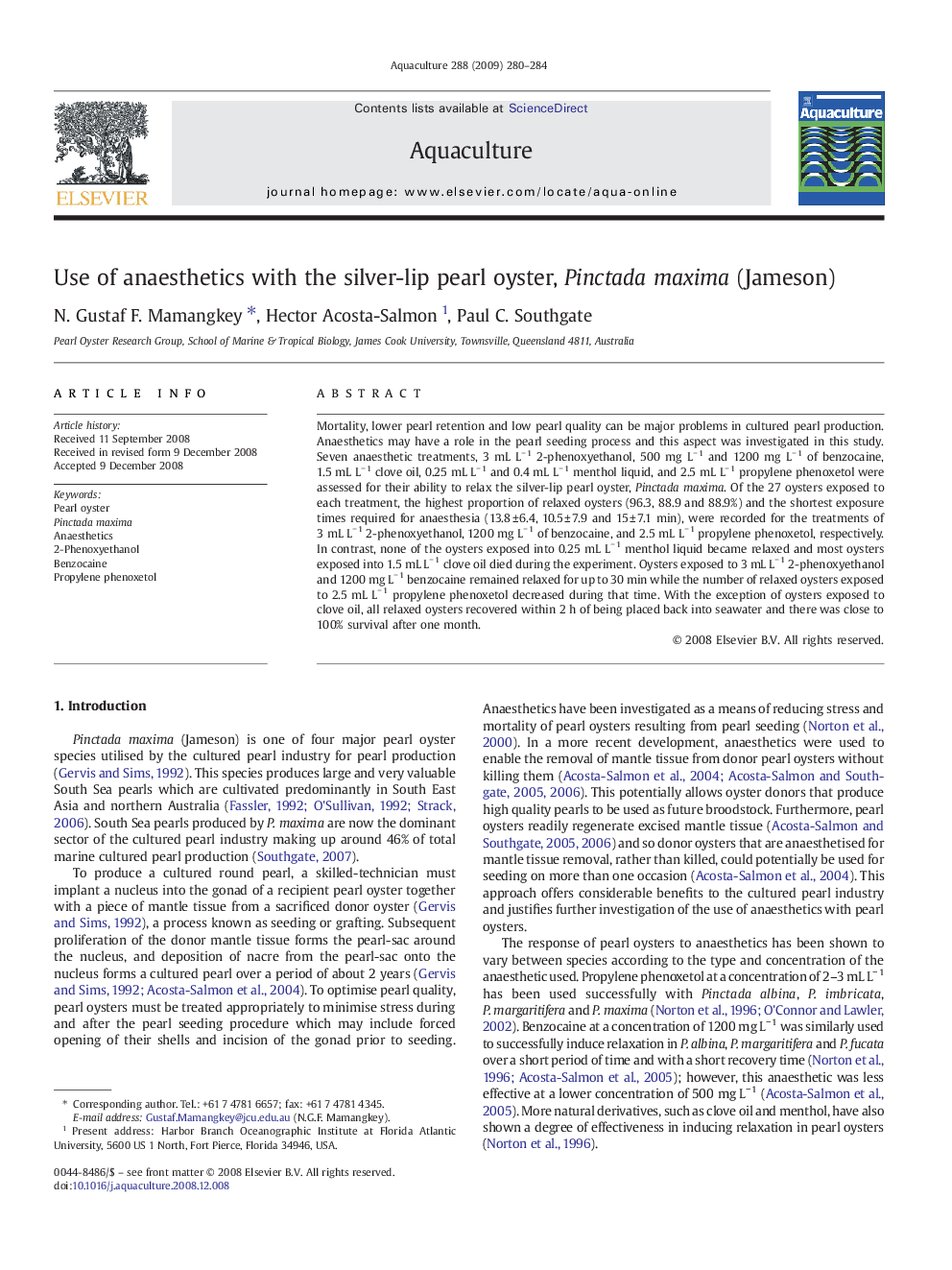| Article ID | Journal | Published Year | Pages | File Type |
|---|---|---|---|---|
| 8496164 | Aquaculture | 2009 | 5 Pages |
Abstract
Mortality, lower pearl retention and low pearl quality can be major problems in cultured pearl production. Anaesthetics may have a role in the pearl seeding process and this aspect was investigated in this study. Seven anaesthetic treatments, 3 mL Lâ 1 2-phenoxyethanol, 500 mg Lâ 1 and 1200 mg Lâ 1 of benzocaine, 1.5 mL Lâ 1 clove oil, 0.25 mL Lâ 1 and 0.4 mL Lâ 1 menthol liquid, and 2.5 mL Lâ 1 propylene phenoxetol were assessed for their ability to relax the silver-lip pearl oyster, Pinctada maxima. Of the 27 oysters exposed to each treatment, the highest proportion of relaxed oysters (96.3, 88.9 and 88.9%) and the shortest exposure times required for anaesthesia (13.8 ± 6.4, 10.5 ± 7.9 and 15 ± 7.1 min), were recorded for the treatments of 3 mL Lâ 1 2-phenoxyethanol, 1200 mg Lâ 1 of benzocaine, and 2.5 mL Lâ 1 propylene phenoxetol, respectively. In contrast, none of the oysters exposed into 0.25 mL Lâ 1 menthol liquid became relaxed and most oysters exposed into 1.5 mL Lâ 1 clove oil died during the experiment. Oysters exposed to 3 mL Lâ 1 2-phenoxyethanol and 1200 mg Lâ 1 benzocaine remained relaxed for up to 30 min while the number of relaxed oysters exposed to 2.5 mL Lâ 1 propylene phenoxetol decreased during that time. With the exception of oysters exposed to clove oil, all relaxed oysters recovered within 2 h of being placed back into seawater and there was close to 100% survival after one month.
Related Topics
Life Sciences
Agricultural and Biological Sciences
Aquatic Science
Authors
N. Gustaf F. Mamangkey, Hector Acosta-Salmon, Paul C. Southgate,
